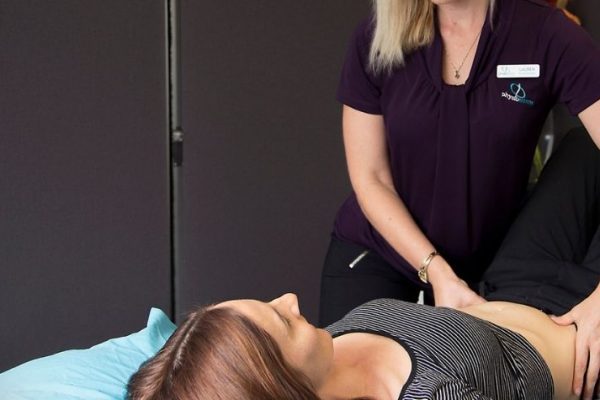Tendinopathy is common and our understanding of it is still evolving. We manage it very differently now than we did in previous years and no doubt our management will change again as more research is done.
Here’s what you need to know right now.
What are tendons?
Tendons are tough fibrous bands that connect your muscles to your bones. Each muscle is supported by two tendons, though tendons vary depending on the muscle’s role. Muscles that give your body considerable power and force usually have shorter and wider tendons whereas smaller muscles are supported by longer, thinner tendons.
What is tendinopathy?
Tendinopathy is the name given to a tendon injury. That’s most likely to occur to a tendon near a joint, commonly the shoulder, elbow, knee or ankle. Achilles tendinopathy is perhaps the most well-known example, causing pain at the back of the heel.
Tendinopathy vs tendonitis
Tendinopathy is an umbrella term for any problem involving the tendon (‘-opathy’ is a Greek suffix meaning ‘a disease or disorder’).
Tendonitis refers to an acutely inflamed tendon due to little tears in its fibres (‘-itis’ means inflammation).
Then there’s tendinosis, a non-inflammatory degeneration of a tendon that changes its structure or composition.
What causes tendinopathy?
Tendon injuries may seem to happen suddenly but usually there’s been a series of tiny tears or collagen breakdown that have happened slowly over time until the tendon starts to cause pain, stiffness or weakness.
Tendinopathy tends to be more common in people who repeatedly make the same movements, such as tennis players (tennis elbow is a tendinopathy), skiers or runners.
Other risk factors include:
- Age – if you’re over 40, your tendons are less elastic and tear more easily
- Underlying medical conditions like rheumatoid arthritis, gout, psoriatic arthritis or thyroid disorders
- Inconsistent overuse – it’s better to exercise consistently through the week than to be a weekend warrior who engages in a burst of tendon-straining activity once a week only.
6 important things to know about tendinopathy
So, what do you really need to know about tendinopathy?
1. You need to know the stage
Tendinopathy has three recognised stages, which are:
A. Reactive tendinopathy, a short-term change in your tendon due to trauma or a rapid increase in loading (been exercising more?). At this stage, your tendon is still in fairly good shape and may revert back to normal if you stop overloading it.
B. Tendon dysrepair, as persistent overuse has caused the collagen in your tendon to begin breaking down but, with the right treatment, you may be able to reverse some of these changes.
C. Degenerative tendinopathy which mainly affects older people or those with chronically overloaded tendons. If you’ve reached this stage, your tendon is unlikely to go back to normal due to many structural changes in your tendon that have thickened it and made it less able to manage a load. There’s a real risk of tendon rupture.
The right treatment depends on the stage of tendinopathy so it’s important to have a proper assessment by a physiotherapist to guide treatment decisions.
2. Rest doesn’t improve it
When your tendon hurts, it’s tempting to put your feet up and rest. There’s a lot of binge-worthy TV out there and you’ve got a great excuse to enjoy some!
Unfortunately, complete rest doesn’t really help your tendon. The pain may ease while you’re resting but once you start moving around again it returns. That’s because, while resting feels good, it doesn’t improve your tendon’s ability to handle a load.
3. Exercise is the most evidence-based treatment
So, what does work? Exercise.
Carefully chosen exercises can help your tendon increase its capacity to manage the loads you put on it in daily life. Your tendon is not likely to improve without specific tendinopathy exercises.
4. Modifying the load helps settle pain
Tendinopathy treatment aims to move you from pain to performance.
Initially, we encourage you to keep moving but reduce the load on your tendon. Loading means using some weight or resistance to place a certain demand on your body.
As your tendon improves, we then gradually increase the load until you are able to enjoy your regular activities again.
5. Tendinopathy responds to exercise – but slowly
Tendinopathy does improve with exercise but it takes time. However much you might wish for a short cut, there just isn’t one. Patience is necessary.
Do your prescribed tendinopathy exercises regularly, checking that you’re doing them correctly and progressing to a higher level of load when your physio says you’re ready. Give it time.
6. Passive treatments are a support act
Massage, therapeutic ultrasounds, injections (but not too many) and shockwave therapy can all help improve tendinopathy. But these are supportive treatments, not the main performer. Exercise is the strongest treatment.
How can Physionorth help?
Tendinopathy often responds well to the right exercise. If you suspect you’ve developed tendinopathy – most likely near your hip, knee, elbow or ankle – then please contact us.
We can assess you carefully, identify your stage of tendinopathy, and develop an individualised exercise plan that helps you progressively increase loading without triggering more pain.
Disclaimer
All information is general in nature. Patients should consider their own personal circumstances.

